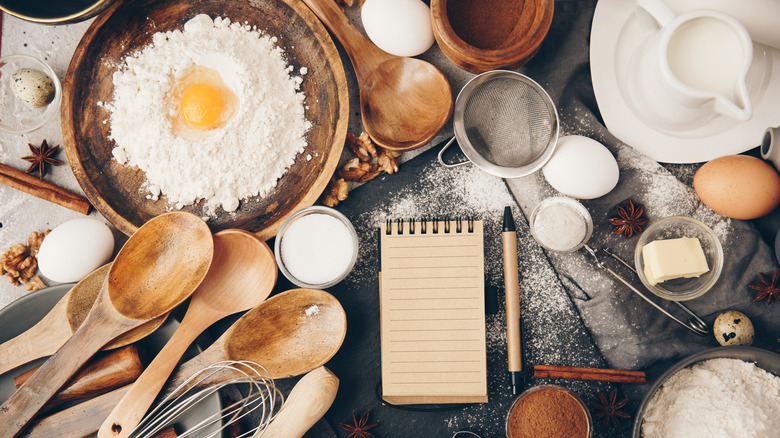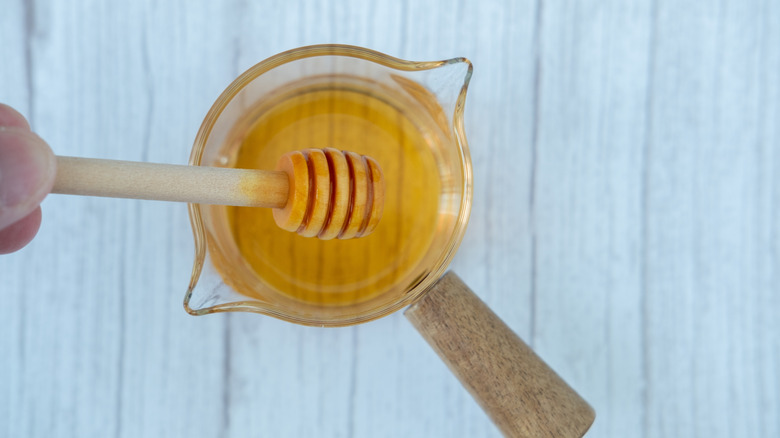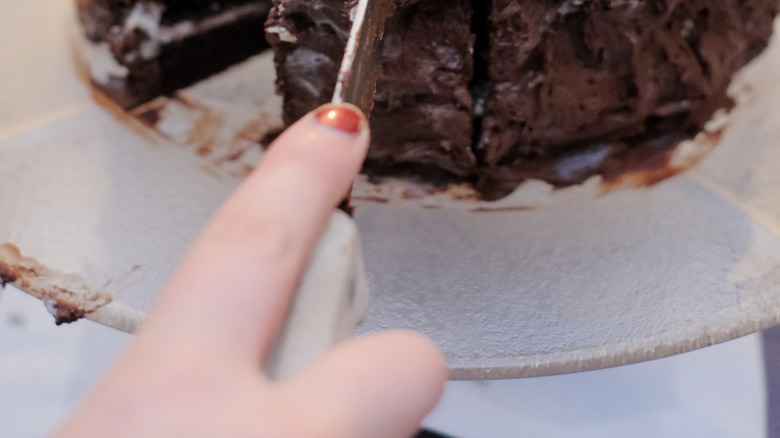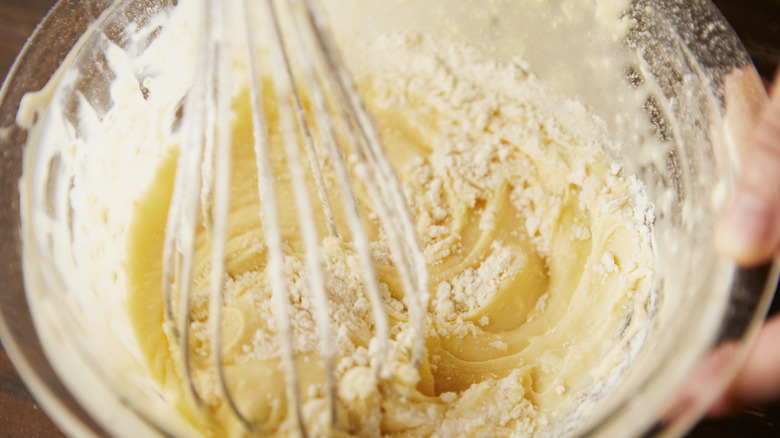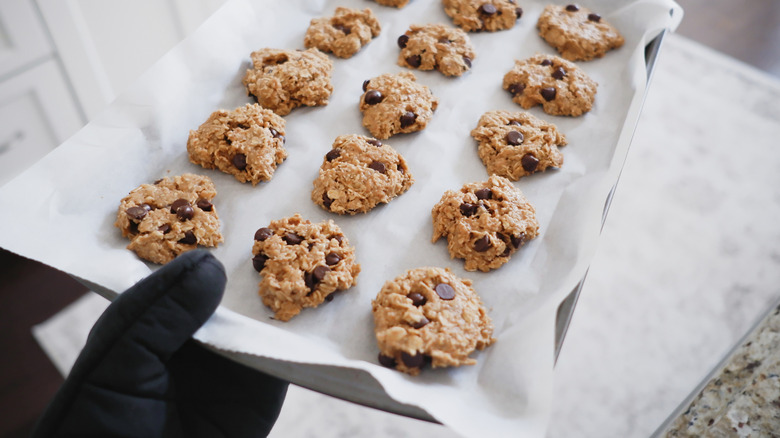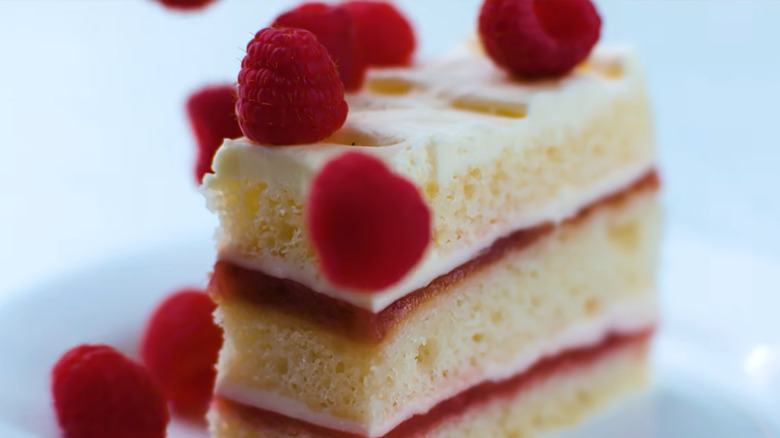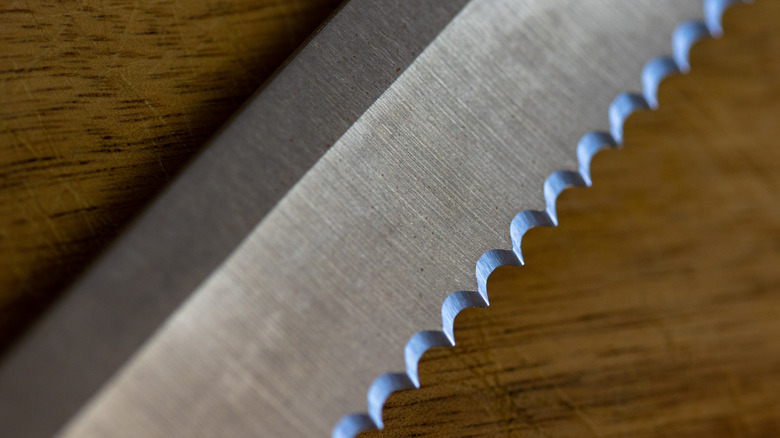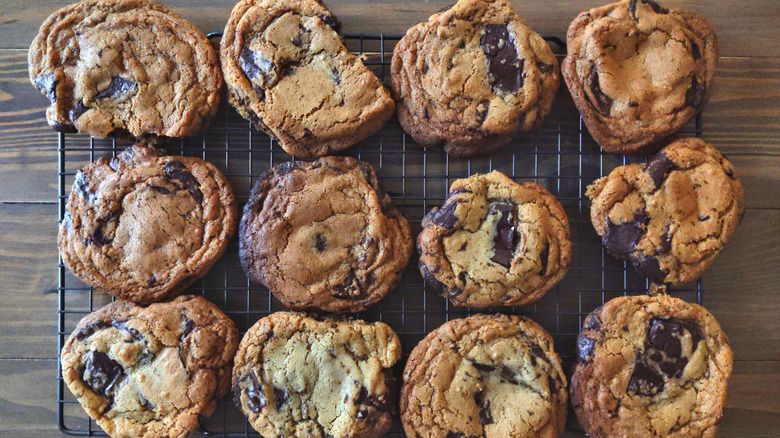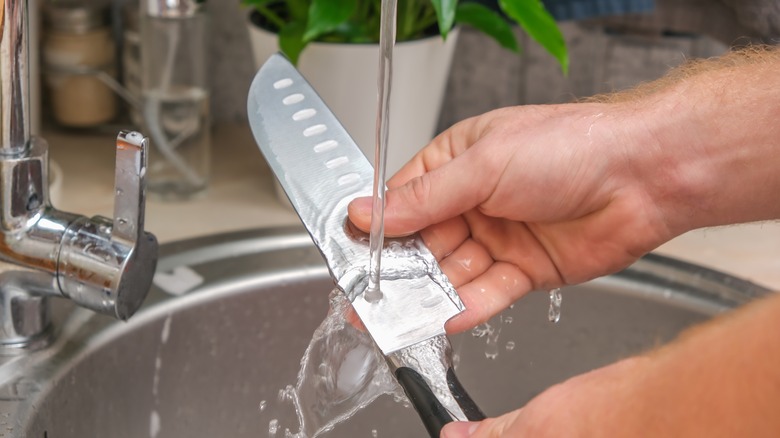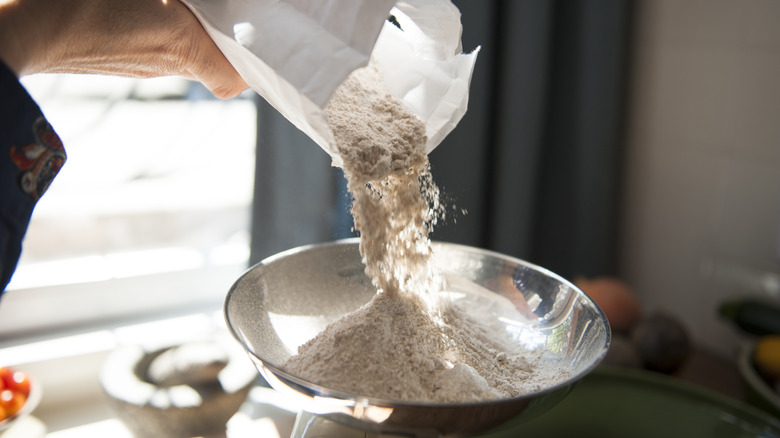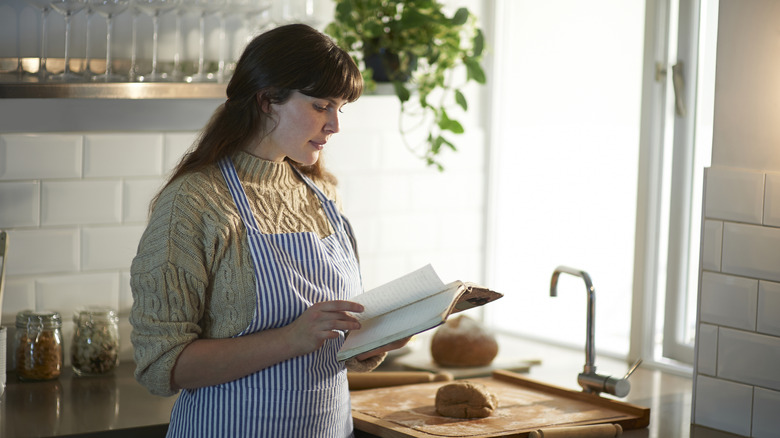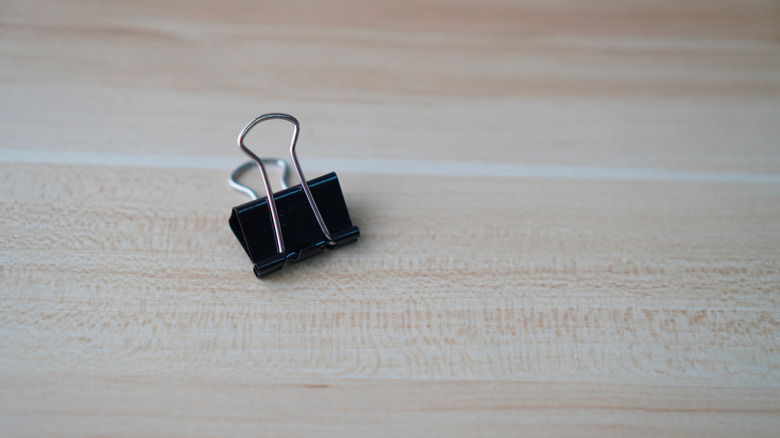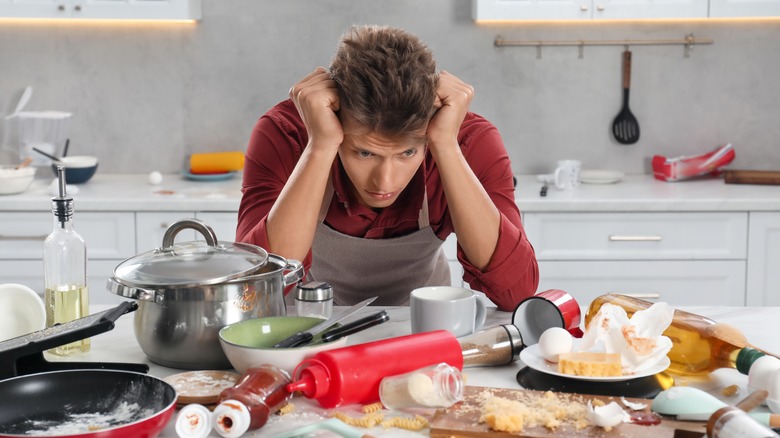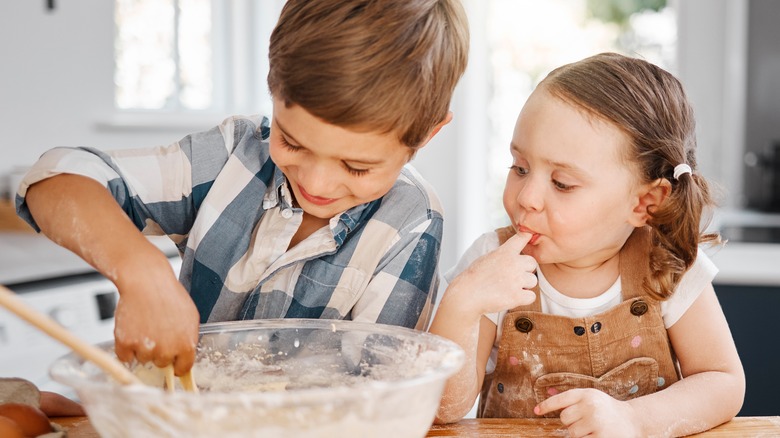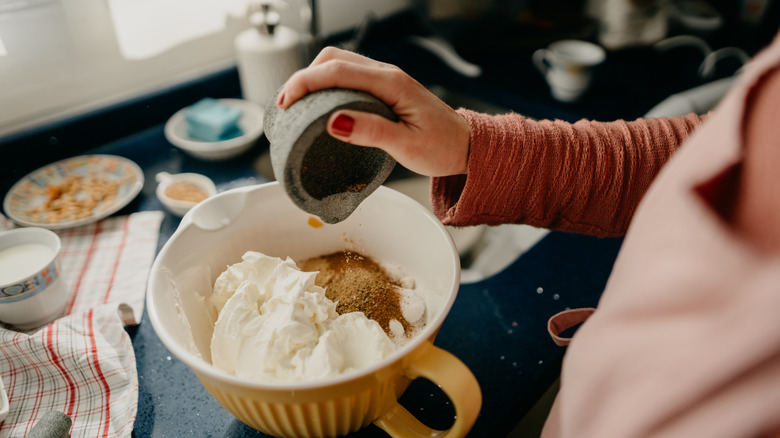15 Secrets To Better Baking According To Experts
We may receive a commission on purchases made from links.
I, like many others, grew up in a family of bakers. The ceremonial torch (read: KitchenAid stand mixer) was passed down from my grandmother to my mom and then to me. But this isn't something that's a universal experience — and even if you did grow up with a spatula in hand, you may not be at the level where you feel comfortable taking your training wheels off just yet. If you've done any tinkering with bakes, be it cookies, cakes, or scones, you may have realized what a challenge it can be. There's just so much to learn, and rarely is there a guidebook with all the hidden secrets and tips you need for baking success — until now.
I, a former food educator and avid home baker, teamed up with a talented trio of culinary professionals, including Keiry Palma, chef-instructor of Pastry and Baking Arts at the Institute of Culinary Education (ICE), Justin Burke, author of "Potluck Desserts," and Jon Davis, the Culinary Innovation Lead at La Brea Bakery, to offer some of the best-kept secrets for better baking. Whether you're trying to master the science of a quality cookie or looking to venture into tantalizing breakfast pastries, you can benefit from some of their insight.
Use cooking spray to prevent sticky ingredients from sticking to your measuring cup
There's nothing more unfortunate than trying to measure out a particularly wet or sticky ingredient, only to flip the cup over and see that the ingredient is still not budging. Luckily, Keiry Palma has a suggestion that she calls her "best-kept secret": cooking spray.
Palma explained that the primary reason that people use cooking spray is to prevent things from sticking; you may have sprayed it on the bottom of a nonstick pan before cooking eggs or doused a baking sheet with it before you cover it in veggies. She suggests spraying measuring cups with a little bit of cooking spray to ensure that your ingredients come out cleanly. Another tool that I personally have used for this same purpose is plastic wrap. If you're measuring peanut butter, vegetable shortening, or a similar item, you can line the inside of your cup with the wrap, measure accordingly, and lift and transfer it to your mixing bowl — effectively eliminating the need to wash an extra measuring cup.
Palma recommends using cooking spray over baking spray for this handy hack. Baking spray typically contains flour, which should not be ingested raw. Therefore, baking spray can be used as long as you plan to bake the ingredients you measure.
Bloom cocoa powder for a better flavor
A big part of baking is finding out how to really bring out the true depth of flavor in your favorite baked goods. One ingredient that could benefit from a little TLC, per Justin Burke, is cocoa powder. Sure, you can measure and add cocoa powder directly to a bowl of brownie mix or cake batter, but Burke suggests taking one extra step to really bring out the depth and complexity of this ingredient.
He explained that blooming, the process of mixing the powder together with a warmed liquid, like water, coffee, or oil, can help dissolve the membrane around the cocoa powder, thus intensifying its flavor. He notes that this simple upgrade only takes a few seconds to implement and is best done when your recipe already calls for a warm liquid. But if your recipe doesn't call for melted butter or coffee, you could always let the mixture cool down to room temperature before adding it in; it may just take a little more foresight to accomplish. This hack can be used for almost any recipe that calls for cocoa, though it would be especially useful for recipes where you really want that chocolate flavor to take center stage, like a double chocolate cookie, brownie, or bakery-worthy chocolate cake.
Spray the knife with cooking spray to prevent stickage
If you're a frequent cake baker, you can probably attest to the fact that baking the cake is actually one of the easiest steps in the process. The decorating, assembly, and cutting is arguably more difficult, and the point at which issues often start to arise. If you cut your cake and notice that your slice is starting to look a little jagged, and cake particles and frosting are totally covering your knife, you may want to try out another one of Keiry Palma's cooking spray hacks.
She recommends spraying the knife that you're using with a little bit of cooking spray before slicing your cake. The fat creates a non-stick coating that will prevent the cake from adhering to it, helping you slice more cleanly and preserving more of the cake's structure. Just make sure to wipe off the excess oil with a paper towel before you slice, as you don't want your bite of red velvet to taste like cheap cooking oil.
Try making certain batters ahead of time
Baking, at some points, can feel like an all-out rush. But one of the best things that you can do as a baker is to build more time into your recipe than you might need. That way, you can try Justin Burke's tip for a more flavorful cake. He recommends resting dense cake batter — excluding fluffy sponges and chiffons — in the fridge overnight. Burke explained that this method will help hydrate the flour in the batter and allows the flavors to develop more. When you're ready to bake the next day, you can easily pull the batter out of the fridge, spoon it into your cake pan, and continue on with your recipe. Try his tip on your next rich carrot cake or autumnal pumpkin loaf.
It's not just cakes that could benefit from time in the fridge. I prefer to rest batters for things like chocolate chip cookies, and I've found that the extra few hours actually does a world of difference for the finished bake. Chilling cookie dough is advantageous because some of the moisture evaporates from the dough, thus amplifying the sweet and salty flavors. It can also help harden the butter, reducing spread and making it easier to scoop and portion it out on the cookie tray.
Parchment paper is king
Take this piece of advice from the experts: You can never have enough parchment paper in your kitchen. And it turns out that it might be one of the most underutilized kitchen tools ever. "Parchment paper can influence the baking process itself by diffusing heat more evenly beneath the item, leading to more consistent results and minimizing the potential for uneven browning or scorching," said Keiry Palma. Besides ensuring that your batch of cookies bakes correctly, parchment paper can also help reduce mess in your kitchen. You can line your trays and pans with it. When your bake is complete and has adequately cooled (which is especially important for brownies and cakes), simply pick up the edges and transfer it to your cooling rack or cutting surface.
Justin Burke agrees with Palma's suggestion. "I swear by pre-cut parchment paper," he said. "It takes the guesswork out of sizing, and if I need to cut it smaller, folding clean edges is so much easier than wrestling with curled paper from a roll." Put these pre-cut sheets within arm's reach, or even better, line your trays with it before you even start baking.
Pair curd with whipped topping for a simple cake filling
If you are new to layer cakes, you are certainly in for quite a ride. Not only do you have to figure out how to construct a towering cake without it falling in on itself, but you also have to find a tasty filling to stick in between your sponges.
Luckily, Justin Burke has you covered. He recommends mixing together store-bought lemon or berry curd with lightly sweetened whipped cream. He notes that it offers a mousse-like texture, just with minimal effort. Not only is this filling an excellent one to stick between cake layers, but you can also use it for donuts — or just eat it out of the bowl with a spoon, per Burke's suggestion.
Use a serrated knife to cut fruit
Knife skills are an important thing to practice, whether you consider yourself to be a professional cook or a budding baker. Besides knowing how to cut, it's also important to recognize the difference between different types of knives and the best use for each one. For one, Keiry Palma recommends using a serrated knife to slice through fruits. This knife is a better alternative to a chef's knife or a nimble pairing knife because of what she describes as a "saw-like edge."
"The force is concentrated on a smaller area, allowing it to easily grip and cut through tough skins without crushing the delicate flesh inside," she said. She uses this common kitchen knife to cut an array of fruits, including pineapple, melons, watermelon, and tomatoes, though she shares that you can use it for bread, too. It's important to note that serrated knives are not made for chopping, so you won't want to use them to break apart nuts or chocolate; stick to the chef's or utility knife for that.
Use salted butter in chocolate chip cookies
Everyone has their own recipe for chocolate chip cookies — just like how everyone thinks their recipe is the absolute best. But you may not have had the ultimate chocolate chip cookies unless you've tried Justin Burke's hack: using salted butter instead of regular butter for your cookies.
In general, you should always bake with unsalted butter, seeing as how salt is not standardized across brands and you want to be able to control the flavor of your bakes. But all bets are off for these cookies. "People always say they want a salty-sweet chocolate chip cookie, but sprinkling salt on top after baking doesn't always hit the mark," Burke said. Using salted butter will give your recipe a baseline salty flavor, and you won't have to worry about all the flaky crystals on top rubbing off by the time you get around to eating a cookie. "It's simple, consistent, and often overlooked. Don't skip it in the grocery aisle," he said.
Heating up your knife can allow you to slice through bakes with ease
Figuring out how to deftly slice through a piece of cake or pie can be challenging. Keiry Palma shared that one way to expedite the slicing process is to heat up your knife beforehand. This hack works well for sticky desserts that tend to cling to the knife for dear life, like ice cream cake, cheesecake, and chocolate cake. Using a cold knife can compress the slices, she explained, resulting in haphazard and uneven cuts. "A hot knife melts a thin path as it cuts, allowing it to glide smoothly through without disturbing the surrounding dessert," she said.
She recommends submerging the blade in hot water for between 15 to 30 seconds; just avoid soaking the handle. You'll also want to wipe the blade off well before you slice into your dessert because you don't want water droplets to fall into your tasty treat.
Always use a kitchen scale for dry ingredients
There are some items that all budding bakers need to have in their arsenal, like mixing bowls, spatulas, and pans of all shapes and sizes. The kitchen scale is among some of the most underestimated essentials, though.
One reason why a scale is a must-have for your baking projects is because it can help ensure that your ingredients are as precisely measured as possible, helping to make sure your recipes are the same across batches. Keiry Palma explained that there is some variability in other measurement tools, seeing as how a cup of flour can vary upwards of 4 and 5 ounces depending on how you scoop it into the measuring cup. When you cook by weight, you reduce this inconsistency and can help standardize your recipe.
Converting your ingredients to weights can make your life easier
Mise en place is an important concept for all cooks to understand, whether you are a professional or a budding home chef. This term, often translated to "everything in its place," means getting all of your tools within grabbing distance, measuring out your ingredients, and reading (and often rereading) your recipe before you start cooking so that you are more prepared going in. Keiry Palma recommends doing it before you bake, as you will feel more organized, and the whole process will run a little more smoothly.
One thing that you shouldn't forget on your prep list is to make sure that your recipe is converted from cups and spoons into weights. That way, when you're ready to bake, you can just take your kitchen scale and measure your ingredients rather than having to rifle through a drawer to find the ½-cup scoop that seemingly grew legs and walked away. Palma also recommends memorizing basic kitchen conversions, like that there is a ½ cup of butter in a stick, to help expedite the prep process.
Use binder clips to prevent your parchment paper from falling
Binder clips are an office supply must-have, and it turns out that they can be a great tool in the kitchen, too. I love having a stash of these on hand for when I need to pour batters into baking trays, like for brownies or cakes. Once you cut the parchment to size, use the binder clips to position it in place. That way, it won't slouch or curl when you pour your batter, making for an accident-free bake and preventing you from losing a ton of batter in the process.
I remove the clips before sliding the tray into the oven, but as long as the clips are made of metal, you could theoretically leave them on the whole time. The clips are inexpensive, handy, and can be used for a variety of baking tins, including cookie sheets, loaf tins, and 8-by-8s.
Don't take shortcuts with your recipe
"Simplify, simplify" — or whatever author Henry David Thoreau said. The reality is that not all simplifications and shortcuts are worth taking, especially when it comes to baking. While it might take less time to breeze over directions and combine steps, it usually comes at the detriment of your recipe. Jon Davis shared that being patient can pay off, especially when it comes to things like bread. "Rushing the process rarely leads to good bread," he said, noting that you need to give your dough adequate time to rise, rest, and ferment. "Some of the best outcomes come from simply waiting and observing."
Another place where you shouldn't cut corners is with your ingredients. Davis notes that using high-quality ingredients is especially important, including for sourdoughs. "Your starter is everything," he said. "A strong starter leads to better flavor, structure, and rise — there are no shortcuts here." Surely, this sentiment can be applied to other recipes, too, including everything from the simplest of cookies to the most show-stopping, sugarwork-adorned cakes.
Embrace the opportunity to learn
I hate to break it to you, but not all of your recipes are going to look like they just came out of "The Great British Baking Show" tent. But they all will offer a chance for you to test your progress, learn from your mistakes, and move upwards from there. "Mistakes are part of becoming a better baker," said Jon Davis. "Every failure teaches you something new, and over time, you'll build confidence and skill." Keiry Palma echoed the same sentiment. "It's important to acknowledge that achieving perfect results in baking is not always immediate," she said.
If you're just starting out baking, it helps to work with basic recipes that require little technical skill but lay the foundation for some of the more complex desserts. For example, making an apple pie will help teach you more about how to properly bring together a pastry, control the temperature of your dough to prevent melting, and make a flavorful yet functional filling. Focaccia is an easy foray into bread baking, as it tends to be very forgiving and requires less shaping than more advanced loaves like ciabattas and baguettes. Selecting novice-friendly bakes, rather than jumping head first into the most complex ones out there, will build both your confidence and technical abilities until you can master more advanced bakes.
Use baking as an opportunity to experiment
"Have fun with it," is one "rule" that is often left out of listicles on how to become a better baker. But baking should be fun, enjoyable, and — hopefully — rewarding. Once you get a hang of the science of baking, then you can start to play with different ingredients. Do some research on what flavors go together (I would recommend grabbing a copy of "The Flavor Bible" for this, as I've found it's been an invaluable tool for culinary experimentation). Start by altering one ingredient at a time, and pair it with flavors that you enjoy. Some of the best flavor combinations that I've ever come across have been unexpected — like my very popular pumpkin, feta, and sage muffins.
"Learn from your mistakes, keep experimenting, and practice having a lot of patience," said Keiry Palma. Baking shouldn't feel like a chore, and finding new ways to experiment and spice up your routine is a great way to break free from the (cake) mold.
